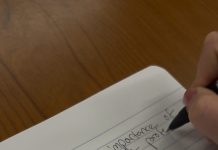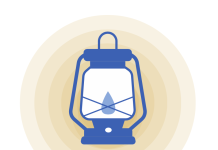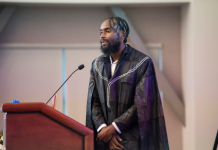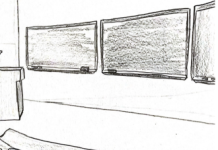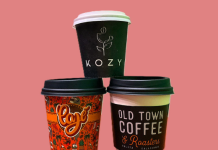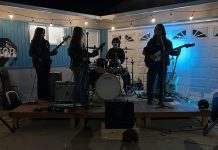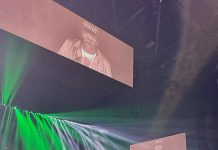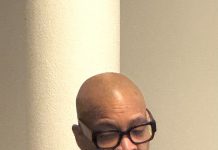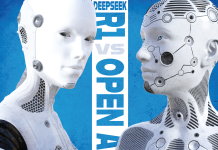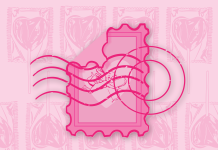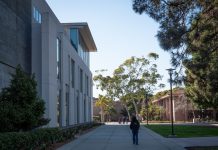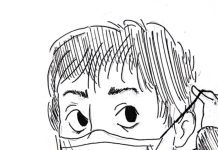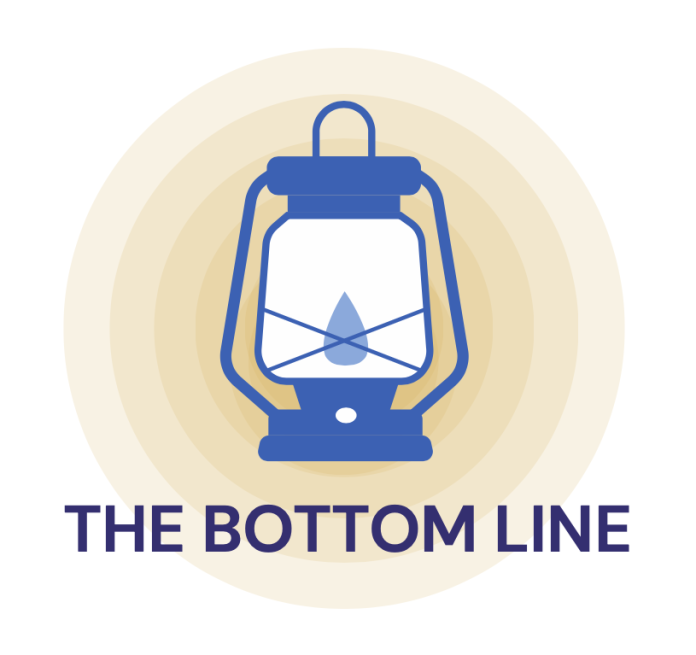Taylor Cusimano
Contributing Writer
This January, multimedia artist Ethan Turpin and Bren professor Naomi Tauge launched their art-science collaboration, WILDLAND, at the Westmont Ridley-Tree Museum of Art, just days after wildfires broke out in the Los Angeles area.
The presentation commenced with introductory comments focusing on the relationship between fire and water, approached from an art-science perspective. The recent wildfires in Los Angeles offered a new viewpoint for this exhibit, situating it within the context of an “era of global environmental change.” This prompted discussions that transcended traditional data visualization, integrating artistic expressions alongside scientific study. Tauge emphasized that “Environmental science is now more than just observing the Earth with the naked eye; we need to develop ways of seeing what we cannot observe directly.”
WILDLAND seeks to raise awareness about wildfires and examine the complex relationship between fire and water. The underlying impact of the exhibition is apparent through the collaborative efforts involved in its development. Moving beyond conventional narratives, WILDLAND stands out as a unique artistic expression that encourages individuals to engage with and understand the science behind wildfires.
During a discussion with attendees Stephan and Jean Weeks, The Bottom Line (TBL) explored their motivations for attending the exhibit, highlighting the intersection of art and science. Jean, an artist, and Stephan, a scientist, expressed admiration for the unique collaboration showcased at WILDLAND. They recognized the blend of creativity and analytical thinking in both disciplines, which allows for innovative and transformative outcomes. Stephan remarked on the similarities between their fields, emphasizing art and science’s distinct yet complementary roles in fostering collaboration and creation. This intersection highlights the importance of diverse perspectives in the discovery process.
Following the discussion, the program transitioned to the exhibit. Turpin shared with TBL the significance of hosting the project at Westmont, as the institution experienced substantial loss during the 2008 Tea Fire and wanted to offer a space for healing. “I knew the museum, my collaborators, and I would be having some intense conversations around the topic of fire, but the show is intended for contemplating these things.”
Some attendees of the show had lost their homes or have connections to those who have. Turpin shared insights from conversations with individuals affected by the Tea Fire in Santa Barbara and Westmont in 2008. “The exhibit played a role in offering a space for healing,” he noted. “We intentionally created a balance between fire and water and observed the recovery of the post-fire landscape.”
Turpin blends watercolor-based digital projections with photographs of wildfires to illustrate the effects of climate change. His techniques mimic water flow through tree structures, highlighting their intricate water cycles, and the large-scale photographs contrast the serene watercolor projections, capturing the devastating reality of wildfires. This was developed while creating the exhibit to allow the audience to connect personally with the artwork. Turpin stated, “There is sound in the soil that resonates with us. We collaborated to elevate ideas and create an engaging, open experience for the audience.” By merging traditional art with modern technology, his installations immerse viewers in environmental themes.
In a conversation with attendees Stephan and Jean Weeks, TBL gained insight into their thoughts on the creative process. “I am an artist, and he is a scientist, so it is fascinating for us to examine their work,” Jean shared. “They must prioritize and visualize specific aspects,” she added, noting, “It can be hard to decide on just one focus.” Stephan interjected, “It’s called a challenge.”
Beyond scientific insights and artistic expression, WILDLAND inspires those navigating their own encounters with wildfires. In discovering the voice of nature, each person who engages with the exhibit departs with a powerful narrative that reflects on water cycles and the resilience born from the devastation of fire.

